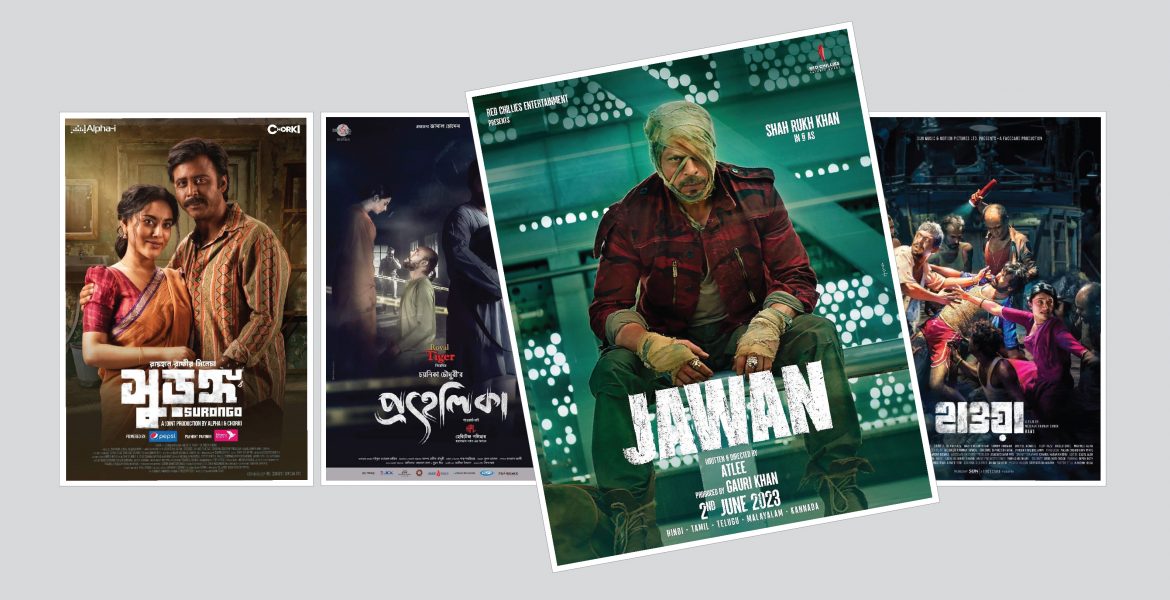THE RELEASE OF HINDI MOVIES AND WHAT IT MEANS FOR THE ENTERTAINMENT INDUSTRY OF BANGLADESH
Till this year, Bangladesh had banned Indian films in its theatres after the Indo-Pak partition, and they remained prohibited well into the future. The motivation behind the ban was simply that the Bangladeshi film industry would flourish and contribute to the economy of the nation. And this move yielded good results for many years when movies were the mainstay of the Bangladeshi social life. Movie theatres were meeting places for all classes of people and even at midnight, the pavements outside the theatres would be thronged by happy movie-goers looking for a snack to end the night.
Unfortunately, the golden era of the Bangladeshi film industry waned, and then growth never really occurred; Dhaliwood, as it is popularly called, went into a steep decline. Bangladeshi films, with their limited budgets and repetitive storylines failed to hold their audience’s interests for long, and as it would, movie enthusiasts gravitated increasingly towards the more glamorous and creative Western productions for their entertainment. And, this shift slowly triggered the death of single screen cinemas over the years, considering that Hollywood movies only run in the multiplexes and cater to a certain class of viewers. As a result, more than 1000 movie theatres in the country have shut their doors in the last two decades, reflecting a lost cause and a dying state.
LOOKING AT THE INSATIABLE DEMAND FOR BOLLYWOOD, AND THE POOR REVENUE STREAMS OF THE BANGLADESHI ENTERTAINMENT INDUSTRY, 19 INFLUENTIAL BANGLADESHI FILM EXHIBITORS RIGOROUSLY LOBBIED TO LIFT THE BAN ON INDIAN CINEMA THIS YEAR.
Modhumita, a renowned and luxurious local cinema hall saw the poorest crowd this year since its inception, with a hall employee even lamenting that Bangladeshi films have not been pulling in good crowds for countless years now.
But, this definitely does not mean Bangladesh always produces substandard movies. Recent movies like Rehana Maryam Noor, Hawa, Prohelika, Surongo, and Priyotoma have had their days in the sun, some even bagging national and international acclaim for the country. The audiences too, have given them their due credit by going to the theatres in flocks to watch. Unfortunately, movies with such compelling storylines have been few and far between.
On the other hand, pirated copies of Indian content continued to be voraciously consumed by the Bangladeshi public through the decades. And with the prevalence of Indian movie channels in cable TV, Indian movie stars became household names and gained mass following. Fashion was copied, as were looks and body language. And the obsession continues to date. Looking at the insatiable demand for Bollywood, and the poor revenue streams of the Bangladeshi entertainment industry, 19 influential Bangladeshi film exhibitors rigorously lobbied to lift the ban on Indian cinema this year.
Pakistan had once gone through a similar scenario and the Information Minister Hasan Mahmud compares the dire situation of Dhaliwood to the Pakistani entertainment sector. “In Pakistan the number of cinemas had once come down to 30-35. Then they allowed the import of Indian Hindi films. The number of cinemas has since risen to about 1,200 and the standard of Pakistani films has also improved,” he mentioned.
And so, Yash Raj Film’s Pathaan, starring Shah Rukh Khan, was released in Bangladesh on 12 May 2023 at 41 theatres across the country. The movie’s success as the first Indian movie to hit the Bangladeshi theatres in many years breathed new life in the box office scene of Bangladesh. And, not all of the theatres were multiplexes either. Shahrukh Khan’s star power perhaps added a much more substantial push to the manic frenzy that would surround the release of an Indian film in the country. The movie also targeted the middle and lower-middle class as its customer base so the response was huge.
Then, SRK’s Jawan entered the scene, and boom! Jawan’s cast and riveting storyline served even more to fill the industry coffers. As thousands flocked to the cinemas to watch their beloved stars on screen, single screens across the country saw the old crowds back and how! Many are now hopeful that businesses will revive, as around 10 Bollywood movies are scheduled to release in Bangladesh each year.
The movie itself is a treat for many Bangladeshi fans, who lauded the movie gleefully. The movie is a delicious concoction of tear-jerking moments, Shah Rukh Khan’s charisma, larger-than-life action, thought-provoking storyline and flawless comic timing. A perfect marriage between the massive South Indian film Industry and the Mumbai based Bollywood created by director Atlee.
But, as they say, no good deed goes unpunished, the release of Jawan saw severe backlash and outcry among many local movie makers and actors. However, businessmen staunchly stand behind the decision taken by the Directors Association and the Ministry of Information and Broadcasting.
MANY ARE NOW HOPEFUL THAT BUSINESSES WILL REVIVE, AS AROUND 10 BOLLYWOOD MOVIES ARE SCHEDULED TO RELEASE IN BANGLADESH EACH YEAR.
The move is expected to not only save livelihoods for those working in the local cinema halls, but also to ensure the long-term success of Bangladeshi cinema. After all, it is only if the halls remain open, that Bangladeshi filmmakers will have somewhere to release their work. Also, healthy competition will encourage the local artists and creatives to bring out their best work. “Monopoly destroys business. When there is competition, there will be business,” expressed Modhumita cinema’s owner, Mohammed Iftekharuddin. He feels that the decision to bring in Indian cinema in Bangladesh will revive at least 200 to 300 theatres around the country.
What better than the allure of Indian cinema to keep the stream of release and revenue coming in?
Photographs: Internet

